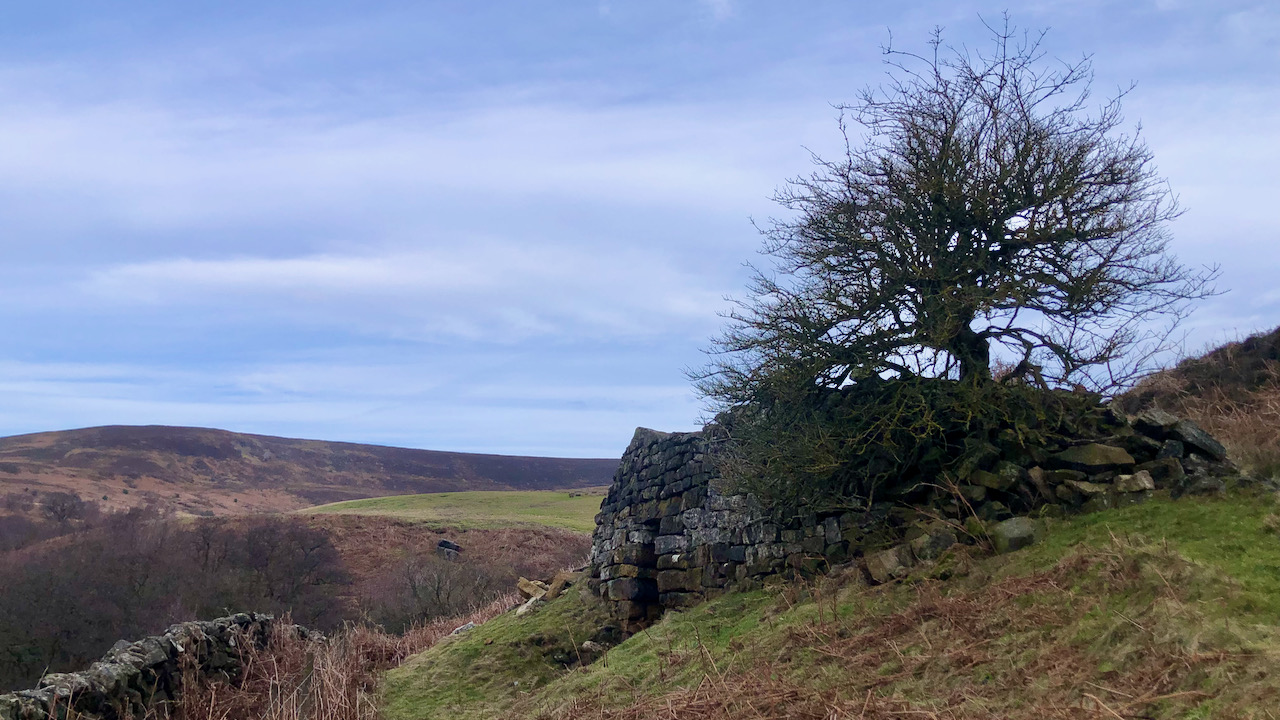One of the many limekilns that can be seen dotted around the Tabular Hills1NYMNPA HER Record No: 3250..
These were used to produce agricultural lime to be spread across the fields as a sweetening agent and to replenish losses, a traditional method in the 18th and 19th centuries for improving the fertility of acidic soils.
Limestone, extracted from nearby quarries, was burnt in such kilns, fuelled by either wood or coal. The result of this fiery process? Quicklime, which after mixing with water results in slaked lime – both were used to improve the soil but the latter is safer. It made more sense to cart the limestone to the kiln. This was cheaper than transporting the fuel. That’s why even the modest farmsteads had a spot for lime-burning or a small kiln. Of course, you needed a close source of fuel, usually coppiced wood, and water.
These stone-lined lime kilns mostly date from the Agricultural Revolution in the 18th and 19th centuries. This period witnessed the enacting of Parliamentary enclosures and a concerted effort to enhance agricultural productivity. During the Napoleonic Wars, grain prices surged, prompting the effective application of lime to boost yields on impoverished terrain.
This kiln is built into the bankside. Inside would be an open-topped chamber, and down at the bottom, there’s a hole called a ‘stoke-hole,’ used for ventilation and for extracting the lime. Kilns come in two types. Flare Kilns fire a batch at a time. Draw Kilns burn non-stop, shovelling out the burnt lime from the bottom while pouring in fresh fuel and more limestone from the top.
I’ve mentioned before that the lime produced by these kilns stayed within the local vicinity. Up north in the dales, where limestone was scarce, they had to import the lime. There’s a tale told by Joseph Ford about some farmer in Lealholm tilling around two hundred acres, which was quite a size compared with other farms in the dale. This was around 1830 or so, and this farmer grew a considerable amount of wheat. His farmhands would make a thirty-two trips to Cropton each season, with each trip using two wagons, or ‘double-draughts,’ which means, or sixty-four wagon loads if you’re counting. And in each of those wagons, they packed twenty-five hundredweights. Crunch the numbers, and you’re looking at around eighty tons of lime hauled in from Cropton in just one season, all for the benefit of this one farm. That’s quite a lot of lime2Ford, Joseph. “Some Reminiscences and Folk Lore of Danby Parish and District.” Page 120. Horne & Son Ltd. 1953..
Limekilns, dating from the 18th and 19th centuries, played a vital role in local agriculture by transforming limestone into lime for soil improvement. The economic choice of transporting limestone rather than fuel led to the widespread presence of these kilns, even in small farmsteads. The kilns stand as silent witnesses to a time when these processes shaped the agricultural landscape in the region.
- 1NYMNPA HER Record No: 3250.
- 2Ford, Joseph. “Some Reminiscences and Folk Lore of Danby Parish and District.” Page 120. Horne & Son Ltd. 1953.

Leave a Reply